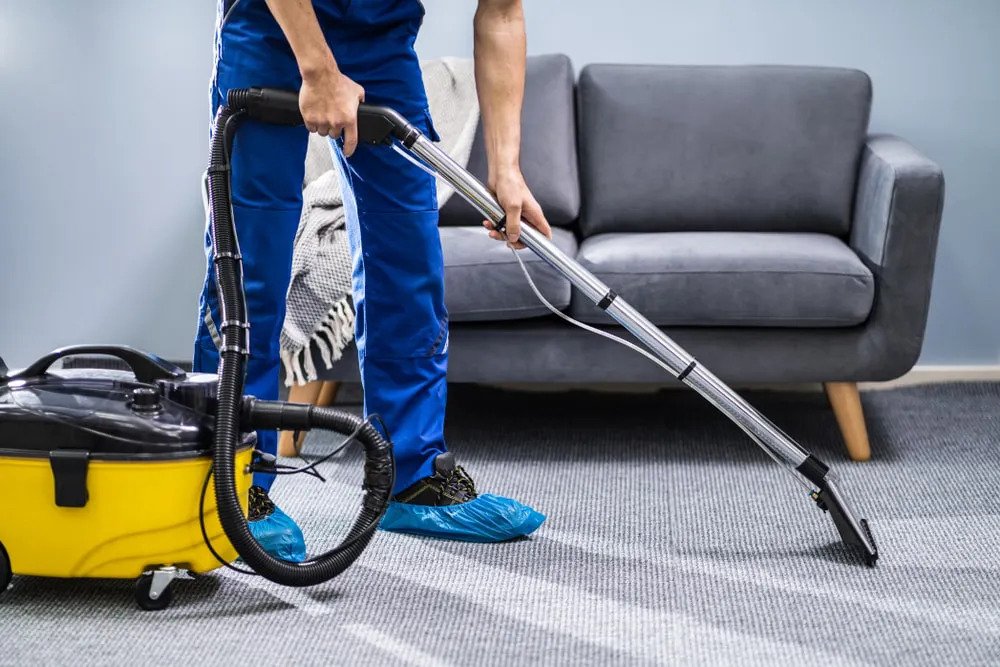Industrial vacuum cleaners, often overlooked in everyday discussions, play a pivotal role in the maintenance and functionality of numerous industries, from pharmaceuticals to automobile manufacturing. With the rapid pace of technological advancements in the last few decades, the market has seen an undeniable surge in demand for more innovative, state-of-the-art solutions. As the landscape of industries undergoes transformation, so does the necessity for cleaning equipment that’s not only efficient but is supremely adaptive to changing needs. At the heart of this groundbreaking evolution? A relentless pursuit of innovation and technological integration.
High-Efficiency Filtration Systems
The days of basic filtration are long gone. Modern industrial vacuum cleaners have welcomed and embraced advanced filtration technologies with open arms. Unlike their traditional counterparts, these futuristic machines can trap even the minutest of particles, ones that often escape the naked eye, ensuring a pristine, cleaner, and healthier environment. This has profound implications. By effectively capturing these particles, the vacuums stand guard against the onset of allergies, potential respiratory issues, and other health hazards, especially in densely populated workspaces. The significance of this advancement? It’s monumental. There’s a tremendous reduction in dust emissions and the air quality improves exponentially. Thus, industrial spaces metamorphose, becoming not just visibly cleaner, but also safer for the workforce.
Smart Sensors and Automation

We live in a golden era of technology, an age where automation and artificial intelligence are revolutionizing industries at breakneck speeds. Industrial vacuums have eagerly joined this revolution. A typical industrial vacuum cleaner now boasts of smart sensors, an advanced tech that can diligently detect dirt levels, fine-tune suction power as required, and even promptly detect potential blockages. These intelligent automated features not only significantly enhance the user experience by being intuitive but also give a substantial boost to efficiency levels. Picture this: a vacuum that seamlessly “reads” its surroundings, interprets the data, and then adjusts itself, ensuring an optimized cleaning process without the need for constant manual intervention.
HEPA Filtration for Hazardous Materials
Industrial settings are unique. Unlike our homes, these settings can sometimes house hazardous materials that demand specialized care. The regular filtration systems? They simply don’t stand a chance here. This is where HEPA filters make a grand entrance. These sophisticated filters, backed by rigorous science, have the prowess to trap at least 99.97% of particles as small as 0.3 microns in diameter, which includes threats like asbestos and certain harmful bacteria. This unmatched level of filtration ensures that even the most dangerous and elusive particles are securely trapped, rendering vast areas completely safe for workers, and considerably reducing health risks that lurk in the shadows.
Customizable Attachments and Accessories
Industrial settings are a diverse lot, each with its unique challenges. One size or solution, therefore, definitely does not fit all. Recognizing and honoring this diversity, modern vacuum cleaners are designed with a plethora of customizable attachments. From wide, sturdy brushes tailor-made for expansive surfaces, to intricate nozzles crafted for the tightest of corners, these advanced accessories ensure that every distinct cleaning need is addressed with precision. In doing so, they enhance the vacuum’s adaptability, making it a versatile beast and amplifying its effectiveness manifold.
Cordless and Battery-Powered Options
In sprawling industrial landscapes, wires can be more than just an annoyance—they can be restricting. Modern engineering has offered a brilliant solution: cordless and battery-powered vacuums. These devices empower users to maneuver freely, unshackled, especially in expansive or remote locations where outlets are sparse. Armed with robust, long-lasting batteries, these vacuums pledge that cleaning operations remain smooth and uninterrupted, even in areas distant from traditional power sources.
Noise Reduction Technology

While a quieter workspace might sound like a luxury, in truth, it’s an essential component for enhancing productivity. Recognizing this need, modern industrial vacuums have been embedded with advanced noise reduction technologies. By effectively dampening the noise generated during operations, these machines not only increase their own efficiency but also contribute to a conducive, distraction-free work environment, free from the perpetual stress of loud, continuous, and often grating droning.
Robust Construction and Durability
When it comes to industrial equipment, durability isn’t just a desirable feature—it’s an absolute imperative. Keeping this non-negotiable in mind, industrial vacuums today are crafted from high-grade materials like stainless steel or reinforced plastics, ensuring they’re battle-ready for rough usage and challenging environments. Furthermore, the advanced construction methodologies adopted in their creation are a guarantee of longevity, ensuring that industries get maximum value for their investment while benefiting from consistent performance.
High-Capacity Dust Bins
In the industrial world, where every second counts and contributes to the bottom line, time is undeniably a precious commodity. Modern vacuums, understanding this pressure, come equipped with high-capacity dust bins. With these expansive bins, the need to frequently stop and empty the vacuum becomes rare, ensuring operations are seldom interrupted for what is essentially a maintenance task. This feature, while seemingly simple on the surface, can drastically cut down downtime and lead to notable improvements in operational efficiency.
IoT Integration for Monitoring
The Internet of Things (IoT), a concept that seemed distant a decade ago, has made significant inroads into industrial cleaning, merging the digital with the physical. By integrating vacuums with IoT capabilities, industries can now remotely monitor usage patterns, receive alerts for maintenance needs, and even predict potential malfunctions before they cause downtime. This advanced foresight, made possible by digital networks, allows for timely interventions, ensuring the machines remain in peak operational condition.
Eco-Friendly and Energy-Efficient Designs
As global consciousness shifts towards sustainability, industrial vacuum cleaners have risen to the occasion. Many contemporary designs, in line with global trends, prioritize energy efficiency, thereby ensuring reduced electricity consumption without compromising on performance. Moreover, several vacuum models are consciously built using recyclable materials, underlining the industry’s commitment to environmental responsibility and echoing the global call for eco-friendliness and sustainable operations.
Case Studies and Real-World Applications

Real-world applications often speak louder than theoretical discussions. From pharmaceuticals to expansive manufacturing plants, the advanced features of modern industrial vacuums have found enthusiastic takers, proving their mettle. A leading pharmaceutical company, for instance, reported immense benefits from using HEPA-filtered vacuums, ensuring a consistently sterile environment, crucial for their operations. Similarly, a large warehouse, central to e-commerce operations, witnessed a drastic reduction in cleaning times, thanks to the cordless, high-capacity vacuums they adopted.
Conclusion
Gone are the days when industrial vacuum cleaners were mere afterthoughts or deemed mundane. Today, they stand tall, right at the forefront of technological innovation. As industries undergo rapid transformations to meet contemporary challenges, these machines, laden with their plethora of advanced features, are not just passively responding to changing demands. They are, in many ways, shaping the very future of industrial cleaning, setting new benchmarks along the way. The modern industrial vacuum, with its blend of technology and utility, is a shining testament to how innovation has the power to transform even the most routine tasks into endeavors of excellence.




